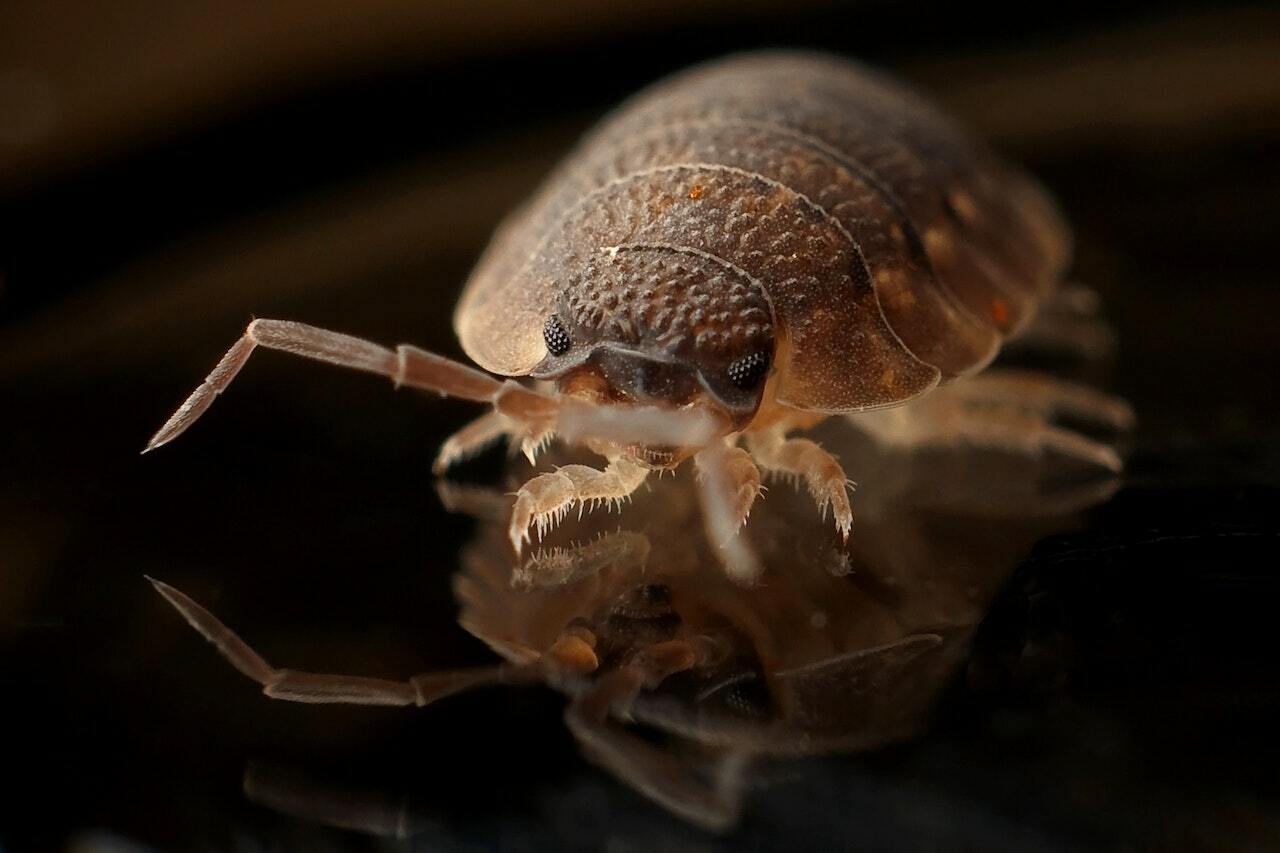What are bed bugs?
Bed bugs are small, parasitic insects that feed on the blood of humans and animals. They are reddish-brown in color, oval-shaped, and about the size of an apple seed. Bed bugs are usually active at night and hide during the day in cracks and crevices, such as in mattresses, box springs, and furniture. They can cause discomfort and distress for their victims, as their bites can cause itching and skin irritation. Bed bugs are not known to transmit diseases, but their presence can be a significant nuisance and can be difficult to eliminate once they have infested a home or building.
Definition of bed bugs
Bed bugs are small, parasitic insects that belong to the family Cimicidae. They are blood-feeding insects that feed on the blood of humans and animals, and they are typically active at night. Bed bugs are small and reddish-brown in color, and they can hide in small cracks and crevices in walls, floors, and furniture. They are found in many parts of the world and can be a significant problem in homes, hotels, and other dwellings. Bed bugs are not known to transmit diseases, but they can cause itching and skin irritation in their victims.
Physical appearance of bed bugs
Bed bugs are small, reddish-brown insects that are about the size of an apple seed. They have flat, oval-shaped bodies with no wings, and they are typically around 5-7mm long. Bed bugs have six legs and two antennae, and their bodies are covered in short, golden-colored hairs. They have piercing-sucking mouthparts that they use to feed on the blood of humans and animals. Bed bugs are usually active at night, and they can be difficult to see because they hide in small cracks and crevices in walls, floors, and furniture during the day. If you do spot a bed bug, it may appear swollen and reddish in color, especially after it has fed on blood.
How do bed bugs get into your home?
Hitchhiking on clothing or luggage: Bed bugs are excellent hitchhikers and can easily crawl onto clothing or luggage when you are in an infested area, such as a hotel, apartment building, or public transportation. They can then travel with you back to your home, where they will start to multiply and infest your living space.
Crawling through gaps and cracks: Bed bugs are very small and can crawl through tiny gaps and cracks in walls, floors, and ceilings. They can enter your home through gaps around windows and doors, holes for pipes and wires, or even cracks in the foundation.
Infested furniture and bedding: Bed bugs can also be transported into your home on infested furniture or bedding, particularly if it has been previously used or stored in an infested area. This can include mattresses, box springs, couches, chairs, and even clothing and linens.
On pets and other animals: While bed bugs prefer to feed on humans, they can also infest pets and other animals, such as dogs and cats. They can then be transported into your home on your pet’s fur, bedding, or toys.
It’s important to take precautions to prevent bed bugs from entering your home, such as inspecting second-hand items before bringing them inside, washing your clothing and luggage after traveling, and regularly inspecting your home for signs of bed bug activity. If you do suspect you have a bed bug infestation, it’s best to contact a pest control professional for treatment.
How do bed bugs spread?
Bed bugs can spread rapidly once they have infested an area. Their ability to reproduce quickly is a major factor in their spread. A single female bed bug can lay hundreds of eggs in her lifetime, and the eggs hatch in just a few days, leading to a growing population of bed bugs.
In addition to their fast reproduction, bed bugs can also spread by traveling to other rooms and buildings. They are excellent travelers and can easily move from one location to another, particularly in multi-unit buildings such as apartments or hotels. Bed bugs can crawl through walls, floors, and ceilings to reach other rooms, and can even infest neighboring buildings if left untreated.
Another way bed bugs spread is by hitchhiking on people and objects. Bed bugs can easily crawl onto clothing, shoes, or bags and travel with you to a new location. This is why it’s important to inspect your luggage and clothing after staying in a hotel or traveling on public transportation. Bed bugs can also hitchhike on used furniture or bedding, particularly if it has been stored in an infested area.
To prevent the spread of bed bugs, it’s important to take quick action at the first sign of an infestation. Contact a pest control professional to inspect and treat your home, and take steps to prevent bed bugs from entering your home in the first place, such as regularly inspecting second-hand items before bringing them inside, washing your clothing and luggage after traveling, and sealing up cracks and gaps in walls and floors.
Bed bugs’ ability to reproduce quickly
Bed bugs are known for their ability to reproduce quickly, which is one of the main factors that contributes to their spread. A single female bed bug can lay hundreds of eggs over her lifetime, with each egg hatching into a nymph in just a few days. Nymphs go through several molting stages as they mature into adult bed bugs, and can begin reproducing themselves within just a few weeks of hatching.
Under ideal conditions, bed bugs can produce several generations per year, which means that a small infestation can quickly grow into a large one. In addition, bed bugs have a high tolerance for starvation and can survive for several months without feeding, which makes them difficult to eradicate once they have established themselves in an area.
To prevent bed bugs from reproducing and spreading, it’s important to act quickly at the first sign of an infestation. Contact a pest control professional for treatment, and take steps to prevent bed bugs from entering your home in the first place, such as regularly inspecting second-hand items before bringing them inside, washing your clothing and luggage after traveling, and sealing up cracks and gaps in walls and floors.
Signs of a bed bug infestation
Bed bugs are often difficult to spot, as they are small and can hide in cracks and crevices during the day. However, there are several signs that can indicate the presence of a bed bug infestation:
Bites: Bed bugs feed on human blood, usually at night while you are sleeping. Bites may appear as red, itchy welts on the skin, often in a straight line or cluster.
Bloodstains: After feeding, bed bugs may leave small spots of blood on your sheets or clothing.
Fecal spots: Bed bugs leave behind dark, rust-colored spots of fecal matter on sheets, walls, and other surfaces.
Shed skins: As bed bugs grow and molt, they leave behind their shed skins, which can often be found near their hiding spots.
Musty odor: Bed bugs emit a musty odor, which can be particularly strong in heavily infested areas.
If you suspect that you have a bed bug infestation, it’s important to take action as soon as possible. Contact a pest control professional for treatment, and take steps to prevent bed bugs from entering your home in the first place, such as regularly inspecting second-hand items before bringing them inside, washing your clothing and luggage after traveling, and sealing up cracks and gaps in walls and floors.
How to get rid of bed bugs
Getting rid of bed bugs can be a difficult and time-consuming process. Here are some steps you can take to get rid of bed bugs:
Identify the infestation: Before treating for bed bugs, it’s important to confirm that you actually have an infestation. Look for signs such as live bugs, shed skins, and fecal stains on bedding and furniture.
- Clean and declutter: Remove all clutter from the infested area and thoroughly clean bedding, linens, and clothing in hot water. Use a vacuum to remove any visible bed bugs and eggs.
- Treat with pesticides: Bed bug pesticides can be used to treat infested areas. Be sure to carefully follow the instructions on the label and use caution when applying.
- Use heat treatments: Heat treatments can be an effective way to kill bed bugs. This can be done with a specialized bed bug heater or by washing and drying infested items on high heat.
- Hire a professional: If the infestation is severe or you are unable to effectively treat it on your own, consider hiring a professional pest control company.
It’s important to note that getting rid of bed bugs can take time and may require multiple treatments. It’s also important to continue monitoring for bed bugs even after treatment to ensure that the infestation has been fully eliminated.
Prevention tips for bed bugs
Preventing bed bugs from entering your home is key to avoiding an infestation. Here are some tips to help keep bed bugs at bay:
- Inspect second-hand items: Before bringing second-hand furniture, clothing, or other items into your home, thoroughly inspect them for signs of bed bugs.
- Wash and dry clothes after traveling: After returning from a trip, immediately wash and dry your clothing and luggage on high heat to kill any bed bugs that may have hitchhiked home with you.
- Seal up cracks and gaps: Bed bugs can enter your home through even the smallest cracks and gaps in walls and floors. Seal up these areas to prevent bed bugs from entering.
- Use bed bug-proof encasements: Use bed bug-proof encasements to protect your mattress, box spring, and pillows from infestation.
- Keep a tidy home: Regularly vacuum and clean your home to remove any potential hiding spots for bed bugs.
- Be vigilant when staying in hotels: When traveling, inspect your hotel room for signs of bed bugs before settling in. Keep your luggage off the floor and bed, and store it in a plastic bag when not in use.
FAQs:
Can bed bugs fly or jump?
No, bed bugs cannot fly or jump. They can only crawl and move short distances.
Are bed bugs attracted to dirt or clutter?
No, bed bugs are attracted to warmth, carbon dioxide, and human or animal blood. They do not care about the cleanliness of your home.
Can bed bugs cause health problems?
While bed bugs are not known to transmit diseases, their bites can cause skin reactions, itching, and discomfort.
How long do bed bugs live?
Bed bugs can live for several months to a year depending on temperature and food sources.
Can I prevent bed bugs from coming back after treatment?
Yes, by following the prevention tips and regularly inspecting and cleaning your home, you can prevent bed bugs from returning.






